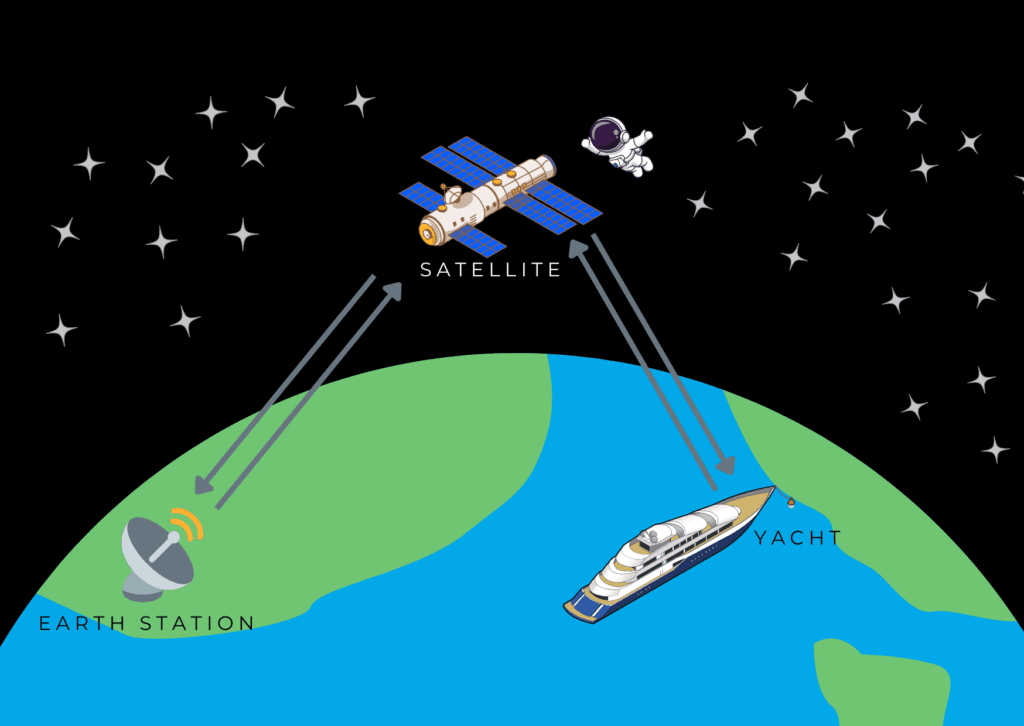If you’ve been wondering how Starlink is able to provide worldwide coverage without the need for land-stations over huge areas of the ocean, thousands of miles from the nearest teleport, then you’re not the only one.
VSAT as we know, uses earth stations to bounce data off a satellite to its destination and back again… as illustrated in my clearly to scale diagram:

VSAT satellites orbit around 36000km above the earths surface, but what happens when the Starlink satellites in orbit are only around 550km above the surface? How do they relay data when they cant see any earth stations in areas of vast ocean?
Enter ISL’s, or Laser Inter-Satellite Links. Basically satellites firing lasers at each other to transfer data, not blow stuff up. ISLs form one of the latest advancements in Starlink’s technology allowing the satellites to communicate with each other directly. Like VSAT, the Starlink satellites communicated with ground stations to relay data to and from the internet. However, with the addition of laser ISLs, the satellites can now communicate with each other directly, allowing a mega-constellation in the sky and forming a mesh network of LEO satellites to rebroadcast data back to the nearest earth station when you’re way out at sea.
That data travels as pulses of light and can be much like that of deploying fiber-optic cable for terrestrial broadband: much faster speeds and much lower latency. “Laser links in orbit can reduce long-distance latency by as much as 50%, due to higher speed of light in vacuum & shorter path than undersea fiber,” SpaceX founder Elon Musk tweeted about the upgrade.
The laser ISLs operate using optical communication technology, allowing the satellites to exchange data at the speed of light. This enables near-instantaneous communication between Starlink satellites and can also provide immense bandwidth, up 10Gb per second, thanks to advances in technology that allow more precise control of a beam.
Mynaric has a nice explainer video which is embedded below: